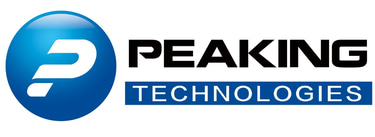Washington Right to Repair Act: What It Means for Electronics Manufacturers
The Washington Right to Repair Act, signed into law by Governor Bob Ferguson on May 19, 2025, marks a significant step forward in the fight for consumer rights and sustainability in the electronics industry. This groundbreaking legislation, reported by GeekWire, empowers consumers and independent repair shops by mandating that electronics manufacturers provide access to repair parts, tools, and documentation.
5/22/20256 min read


The Washington Right to Repair Act, signed into law by Governor Bob Ferguson on May 19, 2025, marks a significant step forward in the fight for consumer rights and sustainability in the electronics industry. This groundbreaking legislation, reported by GeekWire, empowers consumers and independent repair shops by mandating that electronics manufacturers provide access to repair parts, tools, and documentation. As the sixth U.S. state to enact such a law, Washington joins New York, California, Minnesota, Oregon, and Colorado in a movement that now covers nearly a quarter of the U.S. population. But what does this mean for electronics manufacturers? This blog explores the law’s key provisions, its implications for the industry, and how manufacturers can adapt to this transformative shift.
What Is the Washington Right to Repair Act?
The Washington Right to Repair Act (HB 1483), effective January 1, 2026, requires manufacturers of consumer electronics—such as smartphones, laptops, and home appliances—to make repair resources accessible to consumers and independent repair shops on fair and reasonable terms. Additionally, the law bans “parts pairing,” a practice where manufacturers use software to restrict device functionality when non-OEM (original equipment manufacturer) parts are used. The legislation applies to most electronics manufactured, sold, or used in Washington on or after July 1, 2021, with exemptions for video game consoles, motor vehicles, medical devices, and farm tractors.
A companion bill, SB 5680, extends similar provisions to powered wheelchairs and mobility devices, ensuring accessibility for critical assistive technologies. The law aims to reduce electronic waste, save consumers money, and promote a competitive repair market. Advocacy groups like iFixit have hailed it as “the strongest we’ve seen yet,” signaling its robust framework and potential to set a precedent for other states.
Key Provisions of the Law
To understand the implications for manufacturers, let’s break down the law’s core components:
Access to Repair Resources: Manufacturers must provide parts, tools, and documentation (e.g., repair manuals, schematics) to consumers and independent repair shops. These resources must match those provided to authorized repair providers, ensuring a level playing field.
Ban on Parts Pairing: The law prohibits manufacturers from using software locks that limit device functionality when third-party or aftermarket parts are used, enabling greater flexibility for repairs.
Scope and Timeline: The legislation covers electronics manufactured or used in Washington after July 1, 2021, and takes effect on January 1, 2026. Exclusions include specific product categories like video game consoles and medical devices.
Environmental and Consumer Benefits: By encouraging repairs over replacements, the law reduces electronic waste and lowers repair costs for consumers, who can now choose DIY fixes or independent repair shops.
These provisions challenge the traditional business models of electronics manufacturers, many of whom have relied on restrictive repair practices to maintain control over their ecosystems. Let’s explore how this law impacts the industry.


Implications for Electronics Manufacturers
The Washington Right to Repair Act introduces significant changes for electronics manufacturers, from operational adjustments to financial and competitive challenges. Here are the key implications:
1. Increased Operational Costs
Complying with the law requires manufacturers to overhaul their supply chains and processes to provide repair parts, tools, and documentation to a broader audience. This could involve:
Supply Chain Restructuring: Manufacturers must establish distribution channels for repair parts, which may not have been a priority previously. This includes maintaining inventories for older models, as the law applies to products sold or used after July 1, 2021.
Documentation Development: Creating or licensing repair manuals and schematics for public use adds to operational costs. Companies that previously kept such resources proprietary will need to invest in making them accessible.
Software Modifications: The ban on parts pairing may require redesigning software or firmware to ensure compatibility with third-party parts, increasing development and testing expenses.
For example, a smartphone manufacturer might need to stock replacement batteries and screens for models released years ago, while also ensuring that repair guides are user-friendly and widely available.
2. Loss of Repair Revenue
Many electronics manufacturers generate significant revenue through exclusive repair services, charging premium prices for in-house repairs or encouraging device replacements. The Washington law disrupts this model by:
Empowering Independent Repair Shops: By granting access to OEM parts and tools, independent shops can compete with authorized providers, potentially lowering repair prices and reducing manufacturers’ repair revenue.
Encouraging DIY Repairs: Consumers with technical skills can now access official parts and manuals, bypassing manufacturer repair services entirely.
This shift could hit companies hard, especially those that rely on repair services as a profit center. For instance, a laptop manufacturer might lose revenue if consumers opt for cheaper third-party repairs instead of sending devices to an authorized service center.
3. Supply Chain and Inventory Challenges
The requirement to provide parts for products sold after July 1, 2021, means manufacturers must maintain long-term inventories, even for discontinued models. This poses logistical challenges:
Extended Inventory Management: Manufacturers may need to produce or stock spare parts for years, increasing storage and production costs.
Global Supply Chain Considerations: Companies operating globally must balance Washington’s requirements with other markets, potentially leading to region-specific strategies.
For smaller manufacturers with limited resources, these inventory demands could strain budgets and operational capacity.
4. Software and Design Changes
The ban on parts pairing is a game-changer, as many manufacturers use software to lock devices to OEM parts. For example, a smartphone might display a warning or lose functionality if a non-OEM battery is installed. To comply, manufacturers must:
Update Firmware: Remove software restrictions that limit third-party part compatibility, which may require significant engineering efforts.
Redesign Products: Future devices may need to be designed with repairability in mind, incorporating modular components to simplify compliance.
These changes could affect product performance or brand experience, as manufacturers lose some control over the repair process.
5. Increased Competition
The law levels the playing field for independent repair shops, which can now access the same resources as authorized providers. This creates competitive pressure for manufacturers:
Price Competition: Independent shops may offer lower repair costs, forcing manufacturers to rethink pricing strategies for their repair services.
Market Share Risks: Consumers may prefer independent shops for convenience or cost, reducing demand for manufacturer-led repairs.
Companies that adapt by offering competitive repair services or partnering with independent shops could mitigate these risks, but resistance to the law may lead to market share losses.
6. Legal and Compliance Risks
Non-compliance with the Washington Right to Repair Act could result in legal challenges, including lawsuits from consumers, repair shops, or advocacy groups. Manufacturers must:
Meet the January 1, 2026 Deadline: Ensure all systems are in place to provide parts, tools, and documentation by the effective date.
Monitor State and National Trends: As more states adopt similar laws, non-compliance in one region could have broader reputational and legal consequences.
The law’s enforcement, combined with advocacy from groups like iFixit, increases the stakes for manufacturers to act swiftly.
7. Reputational and Market Opportunities
The right-to-repair movement has strong public support, driven by concerns about electronic waste and repair costs. Manufacturers face a dual-edged sword:
Risk of Backlash: Companies that resist compliance or have historically opposed right-to-repair laws (e.g., through lobbying) may face public criticism, damaging their brand reputation.
Opportunity for Leadership: Manufacturers that embrace repairability—by designing modular, easy-to-repair products or offering robust repair support—can appeal to environmentally conscious consumers and gain a competitive edge.
For example, Apple’s recent shift toward supporting right-to-repair in California suggests that proactive adaptation can align with consumer sentiment and regulatory trends.
8. Exemptions and Future Pressure
While the law exempts video game consoles, medical devices, and farm tractors, advocacy groups have flagged these exclusions as targets for future reforms. Manufacturers in these sectors should prepare for potential regulatory changes, as the right-to-repair movement continues to gain momentum.
Industry Trends and Broader Context
The Washington Right to Repair Act is part of a broader national and global push for repair-friendly policies:
State-Level Momentum: With six states now enacting right-to-repair laws, covering nearly 80 million Americans, manufacturers face increasing pressure to adopt consistent, nationwide strategies. The lack of a federal right-to-repair law means companies must navigate a patchwork of state regulations.
Sustainability Focus: The law’s emphasis on reducing electronic waste aligns with growing consumer demand for sustainable products. Manufacturers may need to prioritize modularity and durability in product design to stay competitive.
Consumer Empowerment: By giving consumers and independent shops more control, the law challenges manufacturers’ traditional dominance over the repair ecosystem. This shift could reshape customer expectations and industry standards.
How Manufacturers Can Adapt
To thrive under the Washington Right to Repair Act, electronics manufacturers can take proactive steps:
Embrace Repairability: Design products with modular components and easy-to-replace parts to simplify compliance and appeal to eco-conscious consumers.
Streamline Supply Chains: Develop efficient systems for distributing repair parts and documentation, potentially partnering with third-party vendors to reduce costs.
Offer Competitive Repair Services: Compete with independent shops by providing affordable, high-quality repair options through authorized providers.
Invest in Transparency: Publicly support right-to-repair principles to build trust with consumers and avoid reputational risks.
Prepare for Nationwide Trends: Anticipate similar laws in other states and develop scalable compliance strategies to avoid fragmented approaches.
Conclusion
The Washington Right to Repair Act, effective January 1, 2026, is a landmark victory for consumers, independent repair shops, and environmental advocates. For electronics manufacturers, it presents both challenges and opportunities. While compliance may increase costs and disrupt traditional repair models, it also encourages innovation, sustainability, and consumer trust. By adapting to this law and the broader right-to-repair movement, manufacturers can position themselves as leaders in a rapidly evolving industry.
As more states follow Washington’s lead, the electronics industry must rethink its approach to repairs, embracing a future where accessibility, affordability, and sustainability are paramount. Manufacturers that act now—by designing repair-friendly products and supporting consumer choice—will be best equipped to succeed in this new era of electronics repair.
